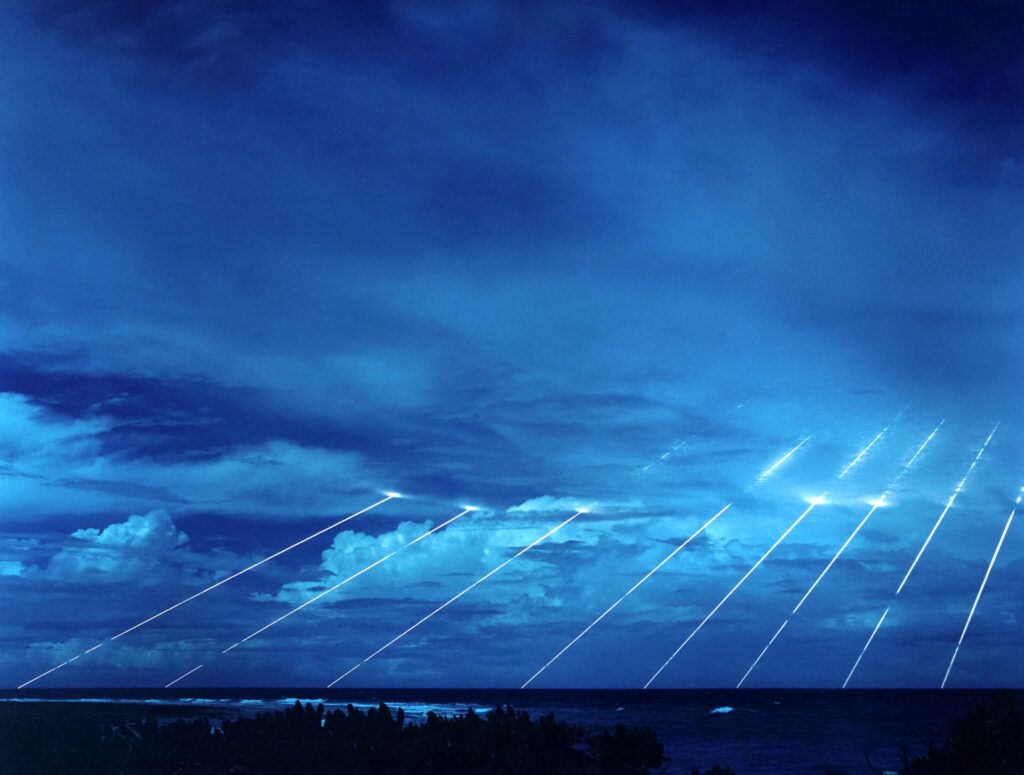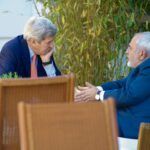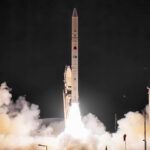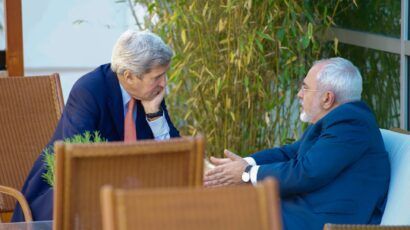Biden opened the door to missile proliferation. Trump should close it
By Debak Das | March 28, 2025
 Systems for re-entry vehicles mounted on a long-range ballistic missile and capable of carrying nuclear warheads are among the technologies President Biden made easier to transfer to other countries before leaving office. (Photo: David James Paquin / US Army, via Wikimedia)
Systems for re-entry vehicles mounted on a long-range ballistic missile and capable of carrying nuclear warheads are among the technologies President Biden made easier to transfer to other countries before leaving office. (Photo: David James Paquin / US Army, via Wikimedia)
In its final weeks in the White House, the Biden administration announced that it had updated the policy guidance for the implementation by the United States of the Missile Technology Control Regime (MTCR), a multilateral export control effort that seeks to limit the proliferation of missiles and missile technology. Per the new guidance, the United States will now allow and facilitate support for transferring the regime’s category I items—including long-range ballistic missile systems, space launch vehicles, and unmanned aerial systems. According to President Biden’s National Security Memorandum on the MTCR, the policy change will enable the United States to transfer entire long-range cruise missiles and ballistic missile systems and their technology to its partners and allies who seek to build their own defense and missile capabilities.
A factsheet released by the White House on January 7 asserts that the new guidance will “advance nonproliferation goals and bolster allied defense capabilities.” But it will have the opposite effect.
Diluting the restrictions on the transfer of long-range nuclear-capable missile systems and space launch vehicles that can be modified to deliver nuclear weapons will weaken the non-proliferation regime and contribute to global missile proliferation. The nuclear non-proliferation order is already facing severe challenges, with several new countries threatening to develop nuclear weapons, missile arsenals proliferating in the Indo-Pacific region, and growing concerns about a new wave of nuclear proliferation being driven by the Trump administration’s abandonment of allies. The new missile transfer guidance will also set a precedent by which Russia and China might assume greater flexibility to dodge their MTCR commitments and spread ballistic missile technology.
If President Donald Trump is serious about engaging in arms control talks with Russia and China, he should first shut down the door of missile proliferation opened by his predecessor.
An informal regime. The Missile Technology Control Regime is a key part of the nuclear non-proliferation regime, restricting the proliferation of technology and equipment that might lead to nuclear delivery systems. The regime was established in 1987 by the Group of Seven (G7)—Canada, France, West Germany, Italy, Japan, the United Kingdom, and the United States—and Russia joined it in 1995. Today the regime has 35 partner countries; India was the most recent addition in 2016.
The MTCR was created to control the transfer of missile technology to deliver nuclear weapons. Because it is an informal regime, each country voluntarily adheres to the guidelines as a matter of national policy. The United States is now changing its national policy of implementing the MTCR.
President Biden’s National Security Memorandum on the MTCR directed US agencies to increase the “flexibility of the case-by-case review” and “facilitate support” for the transfer of category I military missiles, space launch vehicles, and unmanned aerial systems. Until now, the regime’s Category I systems were subject to an “unconditional strong presumption of denial” regardless of the recipient and the purpose of export. This is because the items under category I are nuclear delivery systems with a range greater than 300 kilometers and payloads of at least 500 kilograms. These parameters were set because any missile located at a range greater than 300 kilometers would likely be strategic nuclear missiles and new nuclear proliferators would likely not have miniaturized nuclear warheads below 500 kilograms. This category includes the subsystems of ballistic missiles like re-entry vehicles, individual rocket stages, solid- and liquid-fueled rocket engines, guidance technology, among other systems.
By lifting these restrictions, the Biden administration is opening the door to greater proliferation of long-range nuclear-capable ballistic missile systems. After all, the regime already permits international cooperation on all forms of missiles with a range less than 300 kilometers and payloads less than 500 kilograms.
First missiles, then nuclear weapons. President Biden’s National Security Memorandum on the MTCR increases the possibility of trade in category I space launch vehicle-related commodities, software, and technology. There is a long history of countries using space launch vehicle (SLV) technology to build ballistic missiles. For example, the first stage of India’s SLV-3 rocket was used as the first stage of its Agni intermediate-range ballistic missile. The memorandum states that these transfers will be for “vetted partner space programs,” but it will ultimately rely on the good faith of a recipient’s assurance rather than on any verification mechanism.
The Biden memorandum claims the policy change will advance non-proliferation. It does not explain how. The claim does, however, run counter to evidence that the greater spread of ballistic missile technology correlates with a higher likelihood of nuclear weapons proliferation.
The United States will likely increase the number of potential suppliers of nuclear delivery technology in the international system by making it easier to transfer long-range ballistic missile and space launch vehicle parts and technology. This will weaken the MTCR and the non-proliferation regime.
With more suppliers in the system and looser transfer rules, the spread of nuclear delivery technology might ultimately become impossible to control. This may not necessarily happen because of US transfers but because of the other 34 countries of the MTCR if they adopt the same national policy as the United States. For instance, unconstrained by the MTCR, Russia might find Iran and North Korea to be reliable partners to which it can transfer category I ballistic missile parts and space launch vehicle technology. China, which agreed to unilaterally adhere to the MTCR guidelines despite not being a member, may also find the new US policy a useful precedent.
Double standard. The United States has already made category I MTCR exemptions to sell Australia and Japan long-range Tomahawk cruise missiles. If, as a part of the new policy, the United States continues to sell nuclear-capable, long-range cruise missiles and eventually ballistic missile technology to its QUAD (Australia, Japan, India, and the United States) and AUKUS (Australia, the United Kingdom, and the United States) partners in the Indo-Pacific, China could consider itself free to do the same with its allies and partners in the region.
The exemptions that the United States has made for its partners and allies risk inviting other suppliers to do the same with their partners and allies. This is a slippery slope. Relationships between partners—even nuclear partners—might change. For example, in December 2024, the United States imposed sanctions on Pakistan, once a US partner, for developing long-range ballistic missiles that might reach the US mainland. Moreover, US strategic partners like Japan, South Korea, and Saudi Arabia have all threatened to build nuclear weapons in recent years.
President Biden’s decision to dilute the Missile Technology Control Regime will inevitably weaken the non-proliferation regime. Last August, the director general of the International Atomic Energy Agency, Rafael Grossi, stated that the global non-proliferation regime was “under greater pressure than at any time since the end of the Cold War.” With the new Trump administration, this pressure has increased, as more US allies and partners consider nuclear weapons to counter concerns of abandonment.
The Trump administration need not adhere to President Biden’s policy guidance on the MTCR. President Donald Trump has stated he wants arms control talks with Russia and China because nuclear weapons could “destroy the world 50 times over, 100 times over.” Trump has also stated that nuclear weapons present an existential threat, calling them “big monsters.” If the Trump administration is serious about entering nuclear arms control negotiations, it cannot be actively spreading nuclear delivery systems and undermining the non-proliferation regime.
Together, we make the world safer.
The Bulletin elevates expert voices above the noise. But as an independent nonprofit organization, our operations depend on the support of readers like you. Help us continue to deliver quality journalism that holds leaders accountable. Your support of our work at any level is important. In return, we promise our coverage will be understandable, influential, vigilant, solution-oriented, and fair-minded. Together we can make a difference.















